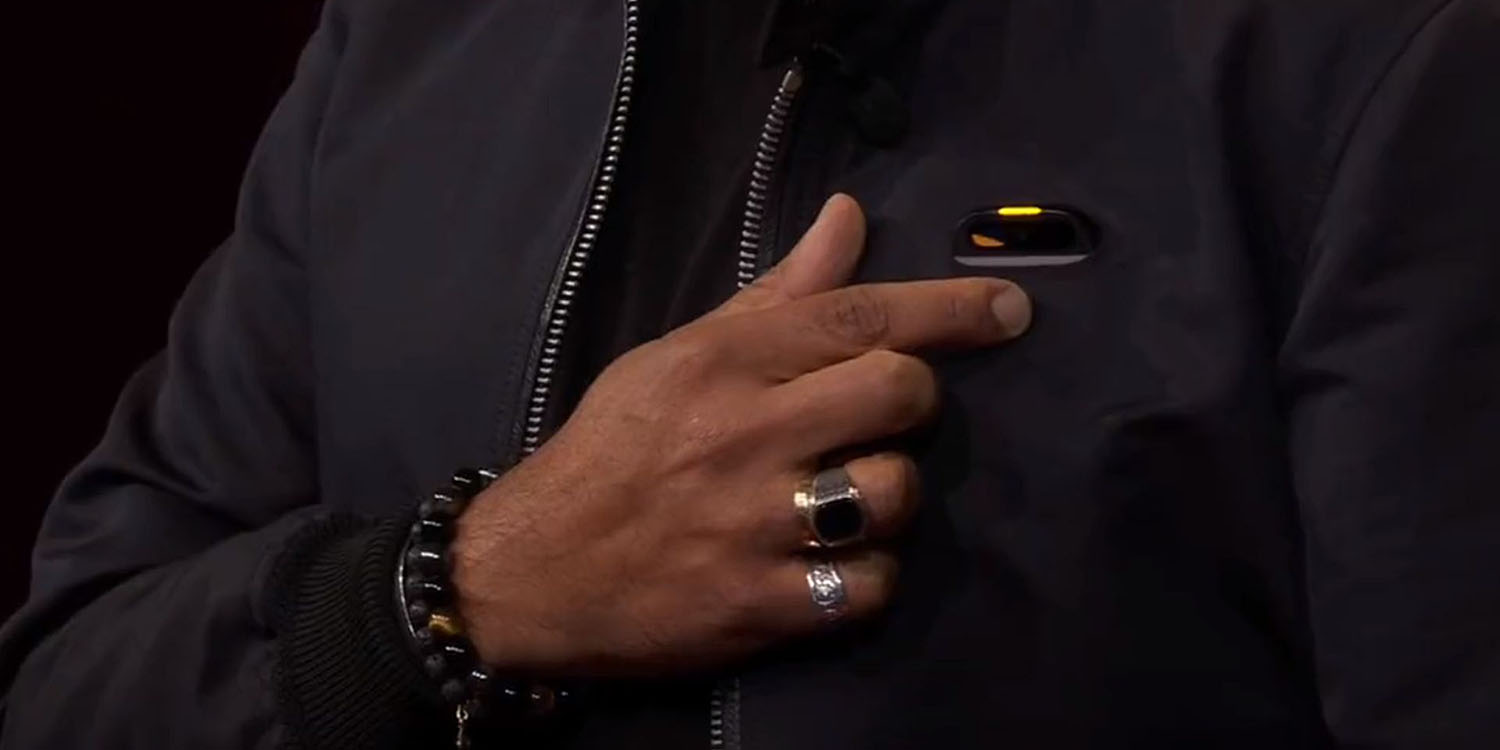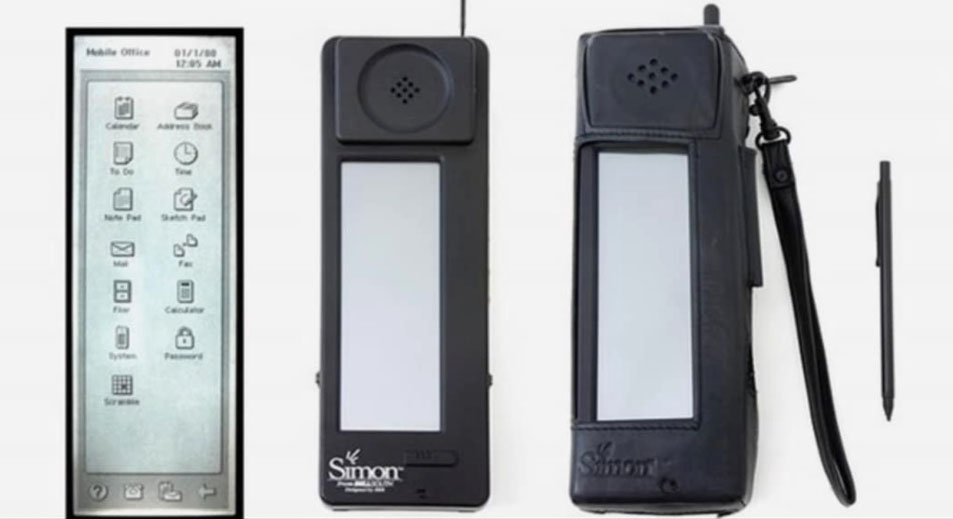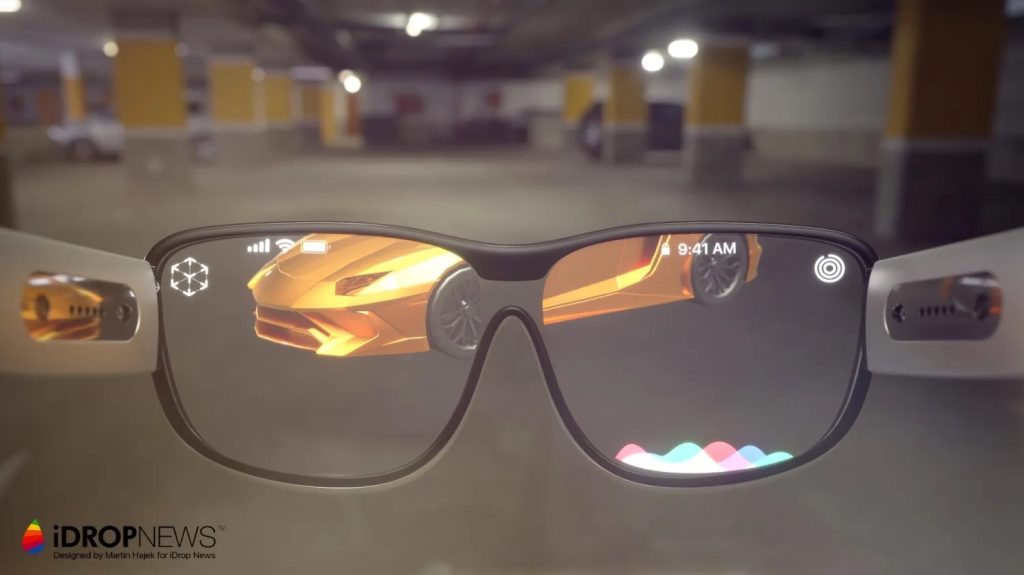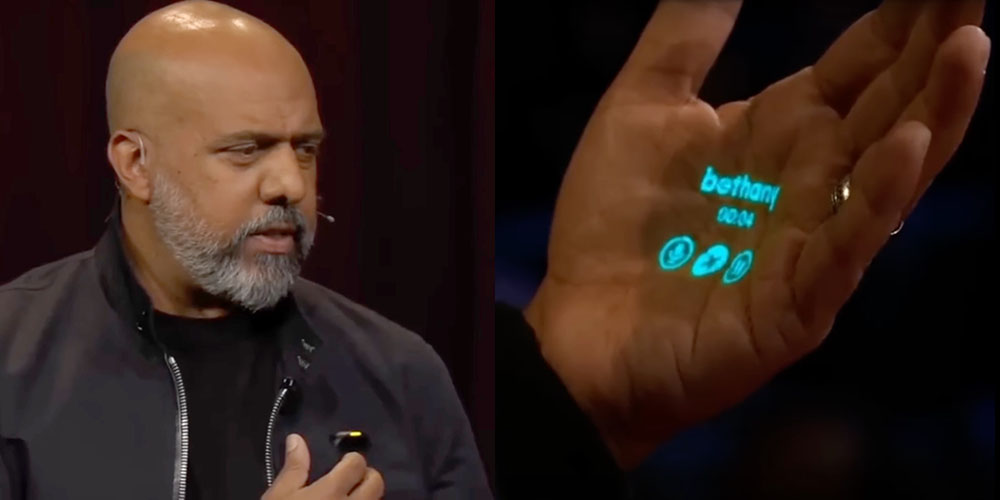
I know, I know: I’m comparing Humane’s unreleased product with another that hasn’t even been officially confirmed to be in the works. But another way of asking the question is: What, if anything, will ever replace the iPhone?
Apple reportedly believes that it will be some form of augmented reality device, likely the long-rumored Apple Glasses – while two former Apple execs have demonstrated their own vision for a smartphone replacement: a device which has been widely compared to a Star Trek comm badge …
Smartphones have gone unchallenged for a long time
It’s easy to imagine that some devices will be around forever, and that technological developments will see them develop new capabilities, while their essential form-factor remains unchanged.
Laptops are one example, and smartphones are another. The first of these was (in my view) the IBM Simon back in 1994 (photo: ColdFusion).

A slab with a touchscreen: The same essential form-factor we have today (albeit with a brief detour into devices with physical keyboards).
So if you wanted to make an argument that the smartphone will always exist – at least for decades to come – you have almost three decades of history on your side.

Apple Glasses
Apple reportedly believes that, within a decade, some form of augmented reality device will eventually replace the iPhone – and the long-rumored Apple Glasses appear to be the company’s, ah, vision for what that device will be (concept image: Martin Hajek).
Apple’s goal is to replace the iPhone with AR in ten years, representing the demand for ABF of AR headsets will exceed at least one billion pieces in ten years.
Personally, I said at the time that I wasn’t convinced. I could see them as a supplementary device, sure, for things like following Apple Maps directions – but not as an iPhone replacement.
On the face of it, that seems unlikely. Sure, if you already wear glasses, then I can absolutely see smart glasses making sense. Indeed, this is a no-brainer to me: as you’re wearing glasses anyway, why not display information on them too? […]
Are we really going to be in a position where every single person who now owns an iPhone is going to wear glasses? And if we’re not going to wear them all the time, does reaching into our pocket for a pair of Apple Glasses make more sense than reaching for our phone?
If anything, I see Apple Glasses as a replacement for my Apple Watch, rather than my iPhone – though even then, it’s a stretch.

Humane’s ‘Star Trek comm badge’
Humane – a company created by two former Apple execs – has a different vision. They demonstrated a prototype of a device which drew obvious comparisons with the Star Trek comm badge.
Humane was founded by Apple software director Bethany Bongiorno and design lead Imran Chaudhri. The latter worked at Apple for over two decades (1995-2016) and was on the Human Interface Team, while the former was in charge of iOS and Mac software engineering from 2008 until a similar departure in 2016 […]
A laser projector creates a virtual display on the palm of your hand, or other surface. That resulting projection is square-shaped and was green in color, with pretty good fidelity.
There’s also a world-facing camera at the top of the device. Other sensors are presumably also present.
Voice input was activated by tapping on the body of the device, which is underneath the jacket/fabric, to start voice input. There’s a strip of yellow light at the top when it’s listening/active.
Humane’s device requires a bunch of disclaimers. It’s a prototype whose real-life capabilities are untested. It’s not really a badge form-factor, more like the size of a really compact smartphone. The battery-life is undisclosed. The cost is unknown. The launch date hasn’t been announced.
But of course Apple Glasses gets the same disclaimers and more – and we can, at least, see the basic idea behind each.
Which form-factor makes most sense?
Let’s leave aside for a moment the question of whether either device will replace or supplement a smartphone, and consider which form-factor makes the most sense. I’m just going to deal here with what strike me as the most obvious pros and cons.
Apple Glasses – Pros
For me, the biggest benefit of Apple Glasses is that you can put them on and then do something like follow directions (on foot, on a bicycle, in a car) without any interaction.
In other settings, like on a plane or in a coffee shop, we can also view content privately and relatively seamlessly.
Apple Glasses – Cons
The biggest drawback is, to me, the limited number of scenarios in which it would make more sense to put on a pair of glasses than to pull out my iPhone.
I’d also expect battery-life to be challenging in a device which has to be both sleek and lightweight to make any sense at all.
Humane – Pros
The most obvious advantage to me is that I don’t have to remove the device from my pocket in order to use it. If I just want to check a notification, I can hold up my hand and have that trigger the device to display it in my palm.
It can also have a somewhat bigger and heavier battery without any significant drawback.
Humane – Cons
The biggest con, of course, is that palm-projection has a very limited resolution. Sure, I can see who is calling, but can I read a two-sentence text message?
Additionally, the requirement for a breast pocket is hugely limiting. None of my shirts have one, and I don’t wear a jacket in the summer.
Maybe it could be attached by a magnet inside a shirt, like this action cam, and perhaps that could even be a MagSafe-style battery pack?
(Additionally, of course, it wouldn’t be within the Apple ecosystem – but it’s the form-factor I’m interested in, so let’s assume that Apple made something similar.)
Could either device replace a smartphone?
This is where I really struggle. Sure, each device can perform certain functions reasonably well – but I honestly can’t see either matching the flexibility of a smartphone.
The Humane device is the most limited when it comes to the display. I could potentially watch a video on Apple Glasses (though doubt I’d want to, unless it can provide a completely black background), but certainly can’t do that with a projection onto my hand.
Top comment by BlueBlowdryer
The Humane device doesn't grab me the way the iPhone did way-back-when. I don't see the utility of it whereas the iPhone's utility, and certainly the iPad, was obvious at the beginning.
This reminds me more of a Google gimmick than an actual product; it presents well on stage but executed poorly in the general circulation. For example, I don't see this device (as is) much more than a giant LiPo battery with a tiny laser projector inside so the battery life and utility beyond what it portends remains an open question. --plus, one has to wonder how many kids' eyes they're going to zap while checking your e-mail. 😜
Lastly, given how much privacy is valued in most societies, the wisdom of projecting texts and (possibly) e-mails anywhere, hand or otherwise, escapes me.
I can’t see people wanting to play games on either device without a smartphone as a controller. Similarly, I might check my bank balance on either, but I’m unlikely to want to make a payment with such a fiddly interface.
In short, just like the Apple Watch, they are interesting companion devices, but not, in my view, replacements.
Which then raises the question: Is either of them better than an Apple Watch as a secondary device? I’m honestly not sure. Each will have an initial wow/gadget factor, for sure, but once that wears off … ?
On the other hand, I was wrong about the Watch itself – so I’ll be keeping an open mind! What about you? Please take our poll, and share your thoughts in the comments.
FTC: We use income earning auto affiliate links. More.






Comments